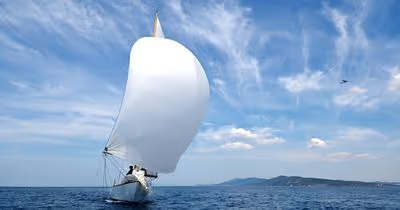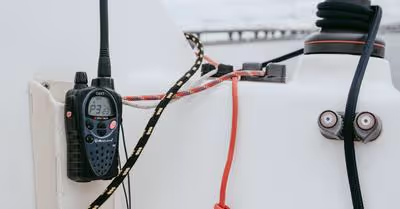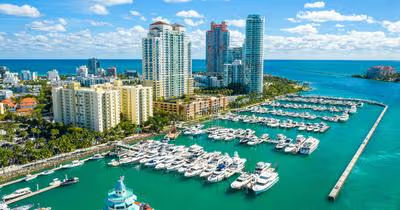Table of Contents
How Much Does it Cost to Paint the Hull of a Boat?
DIY Hull Painting
Painting a sailboat hull yourself can be a gratifying experience. Not only will you save money on the project, but you’ll also get to add your personal touch to your boat. However, it’s important to understand the costs before you start painting.
The cost of paint and other materials will vary depending on the size of your boat and the type of paint you choose. For example, if you have a large boat, you’ll need to purchase more paint than someone with a smaller vessel. Additionally, high-quality paints will cost more than lower-quality options. However, keep in mind that using higher quality materials will result in a better-finished product.
Let’s say you have a 30-foot sailboat with a hull that needs painting. How much will it cost you to do the job yourself? First, you’ll need to purchase the paint (about $200 for a good quality marine paint), plus primer (if needed), brushes, and other supplies. You’ll also need to allow for the cost of renting a scaffold or ladder if you don’t have one.
In addition to the cost of paint and other materials, you’ll also need to factor in the cost of your time. Painting a sailboat hull is a big job, and it will take several days to complete. If you’re not experienced in painting, it’s essential to factor in the time it will take you to learn the necessary skills.
Assuming you’re doing the job right and taking your time, it takes about 20 hours to complete the job. If you value your time at $20 per hour, that’s an additional $400. So all told, you’re looking at the cost of around $600 to $800 to paint your sailboat hull yourself. Of course, this is just a rough figure - your actual costs may be lower or higher depending on the size and condition of your boat, the type of paint you use, and other factors.
Hiring an Expert for Hull Painting
It can cost anywhere from $500 to $3,000 to paint a sailboat hull, depending on the size of the boat and the type of paint used. If you hire a professional painter, they will typically charge by the hour or square foot. The average cost per hour is around $50.
We will take the same boat size as an example for DIY painting. A 30-foot boat would require about 20 hours of work, which would come out to a total cost of $1,000.
The type of paint you use will also affect the overall cost. There are two main types of paint: one-part and two-part polyurethane. One-part polyurethane is less expensive but doesn’t last as long, while two-part polyurethane is more expensive but will last longer.
It’s best to consult with a professional painter to get accurate pricing for painting your sailboat’s hull. They will be able to give you a tailored estimate based on the size of your boat and the type of paint you want to use.
Types of Paint
The type of paint can affect your hull painting cost heavily. Below, we take a look at the different types of paints.
Aluminum Boat Paint
Aluminum boat paint is a type of paint specifically designed for use on aluminum boats. Unlike most other types of paint, it can withstand harsh conditions in open water, including saltwater and UV exposure.
Aluminum boat paint is available in various colors and finishes to choose the perfect look for your boat. It is important to note that aluminum boat paint is not compatible with all types of primer and topcoats, so be sure to consult with a professional before beginning your project. With proper care and maintenance, your aluminum boat will look great for years to come.
Topside Boat Paint
Topside boat paint is a type of marine paint used on the exposed upper surfaces of a boat, such as the hull, sides, and deck. Unlike bottom paint, topside paint is not designed to be submerged in water. Instead, it must be able to withstand the harsh conditions of the elements, including UV rays, salt water, and wind.
Topside paint is typically made from high-quality oil- or latex-based paint with added UV protection. It can be applied with a brush, roller, or spray gun and is usually available in a variety of colors. When choosing a topside paint, it is important to select one that is specifically designed for use on boats. Using standard exterior paint will not provide the same level of protection or durability.
Fiberglass Coatings
Fiberglass paint is a type of paint specifically designed for use on fiberglass surfaces. It usually comes in a spray can and dries to a hard, glossy finish. Fiberglass paint is more durable than regular paint, and it resists fading and chipping. When choosing a fiberglass paint, select one compatible with the type of fiberglass you are painting. For example, if you are painting a boat hull, you will need marine-grade fiberglass paint.
The key to success with fiberglass paint is appropriately preparing the surface before painting. This means sanding down any rough edges and cleaning the surface thoroughly. Once the surface is prepped, you can apply the paint just like any other type of paint. Just be sure to use a brush specifically designed for fiberglass surfaces to avoid damaging the finish.
Wood Boat Paint
Wood boat paint is a type of paint specifically designed for use on wooden boats. It is usually made from a mix of oil and resin, which helps to protect the wood from water damage and rot. Wood boat paint can be applied to both the exterior and interior of a boat, and it is important to choose a paint specifically designed for maritime use.
There are several different types of wood boat paint available on the market, and it is vital to select the right one for your particular boat. Some factors to consider include the type of wood your boat is made from, the climate you live in, and the amount of sunlight exposure your boat will receive. It is best to consult with a professional before selecting a wood boat paint.
Bottom Boat Paints
Bottom boat paints are coatings applied to the bottom of a boat to protect it from the elements. The most common type of bottom paint is anti-fouling paint, which helps prevent the growth of barnacles and other aquatic creatures on the hull. Bottom paints can also protect from UV rays, saltwater, and oxidation.
Different formulas are available for different boats, so choosing the right one for your vessel is crucial. In general, bottom boat paints should be applied every two years or as needed. Most manufacturers will provide specific instructions on applying the paint and how often it needs to be reapplied.
What Factors Influence the Cost of Painting the Hull of a Sailboat?
The following factors influence the cost of painting a sailboat’s hull:
- The size of the sailboat hull
- The type of paint used
- The location of the boat
- The complexity of the design
- The number of coats required
- Prep work that needs to be done before painting can begin
- Whether or not a professional painter is doing the job
- How long the job will take to complete
The size of the hull is perhaps the most critical factor, as a larger surface area will require more paint and take more time to complete. The type of paint used is also significant, as different grades and quality of paints are available on the market. The boat’s location can also play a role, as some locations may be more expensive to have work done - if the boat is in a dry dock or on land, it will be easier to access and work on than if it is in the water.
The complexity of the design is also something to consider, as a more intricate design will likely take more time to complete. Finally, the number of coats required is also a key factor, as more coats will obviously require more paint and take longer to apply. All of these factors must be considered when estimating the cost of painting a sailboat hull.
Prep work that needs to be done before painting can begin, whether or not a professional painter is doing the job, and how long the job will take to complete are essential factors that influence the cost of painting a sailboat hull. This can include stripping old paint from the hull, which is time-consuming and expensive.
If you are considering having your sailboat hull painted, be sure to take all of these factors into account to get an accurate estimate of the total cost.
Maintaining the Finish on Your Boat’s Hull
Your boat’s hull is its most important feature - it’s what keeps you afloat! So it’s important to keep the finish in good condition and cut down costs of repair and repainting. Here are a few tips for maintaining the finish on your boat’s hull:
- Wash the hull regularly with fresh water and mild soap. This will help remove any dirt or grime that could cause the finish to become dull.
- Apply a good quality wax regularly. This will help protect the finish from sun damage and other environmental factors.
- Be careful when docking or mooring your boat. Bumps and scrapes can damage the finish, so it’s important to use soft lines or fenders to protect the hull.
By following these simple tips, you can help to keep your boat’s hull looking like new for years to come!
Recent Articles

















